 WoWasis correspondent Khun Lee’s Top Ten Rules for keeping a Thai bargirl as your girlfriend:
WoWasis correspondent Khun Lee’s Top Ten Rules for keeping a Thai bargirl as your girlfriend:
I have written often in this column about the different aspects of going with both pay-for-play gals and regular gals. Certainly there are arguments for the merits of both, and many guys enjoy a playboy’s life in Thailand pursuing both kinds of ladies. It would be easy to assume that the simplest thing to do would be to stick to the professional gals, as all of the rules are know by both parties from the start and it should be relatively easy for the guy to navigate through the inevitable problems that arise. However, in my experience as well as the experiences of my best mates, guys who stick to the pros nearly always end up in failing relationships, beaten, broke, confused and shattered when it all comes crashing down on their heads. Why is this and what can be done about it? Well, it would be easy for me to reiterate that the professional gals are only for sex and fun and not girlfriend material, but these words fall on deaf ears as guy after guy comes to Thailand and falls head over heals for the first gal he meets. And I don’t need to tell you what kind of gal will be the first to approach him! So for all you guys out there that want to throw caution to the wind and attempt to convert a naughty gal into a regular squeeze here is Khun Nana’s Top Ten Rules for keeping a naughty nightlife gal as your main gal.
And please guys, these rules are for those of you who live in Thailand or will be bringing the gal back to your homeland. For those of you pathetic lost souls sending money from overseas to a naughty gal you met here, there is nothing I could ever say to convince you of the insanity of your actions. However, we local guys do very much appreciate that you are sponsoring and subsidizing our sex lives.
1) If you are paying the bills and/or giving her money, you are in control. This rule is number 1 for a reason, and it is because in every situation in life and especially in Asia, the person with the money who is paying for everything is the boss and has all of the power. If you only remember this rule you will be way ahead of 90% of the guys who are keeping naughty gals as girlfriends. In my apartment building in Bangkok there are at least 10 guys who are living with naughty nightlife gals and nearly every one of them has lost the power in the relationship (to be fair I should say gave up the power) and is being totally dominated by his gal. These gals can smell fear and if you don’t act like the leader in the relationship they will walk all over you and have absolutely no respect or concern for your well being. Heck, I can’t really blame the gals as I don’t even respect these guys. Never forget that the one who is paying the bills is the one with all of the power.
2) Sometimes you will need to remind your gal of rule number one. Last year I was in Pattaya with a close mate who has a Bangkok live-in that he bought out from a go-go bar. We were out on the town drinking and chasing babes when his main squeeze called his mobile. I could hear that she was giving him a hard time on the phone, but my mate is a savvy player in the nightlife game and wasn’t about to let her manipulate him. This is what I heard him say next. “Oh I shouldn’t be in Pattaya partying with Khun Nana because I have a girlfriend? I am really glad to hear that since the 10,000 baht a month I have been paying you to stay with me has really been eating into my budget. Since you are my girlfriend I won’t need to pay you any longer, and I am sure you will also be getting a job so you can help out with the bills. This is great!” There was apparently only the sound of silence on the other end of the line, and we partied our arses off for another 4 days.
3) Never forget that it is all about the money. If you want a real girlfriend then go out and get one. If you are paying a pro to stay with you then it is about the money for her and if you ever forget that fact you will be beyond the point of redemption. You don’t need to think about this in a mercenary way. When you are in the movies and she laughs at a joke you don’t need to remind yourself that she is only there because you are paying her. The point here is that you chose this form of relationship because you have all the power and call the shots and you really didn’t want all the crap that goes along with dating and pursuing a normal girl. I can totally understand. Countless times I will be out on a date and the gal will begin to whine about something or get jealous and possessive with me and I will think “why didn’t I just go grab a gal tonight, do her, pay her and go home to watch Sportscenter.” This form of relationship is about money and sex and fun and if you aren’t getting everything you want then cut her loose and go find the next one.
4) Settle the payment terms right from the start. If you give her money every time she puts her hand out you will be broke in a matter of months. These gals can really be greedy about money (see rules 1, 2 and 3) so tell her from the start how much you are giving her every month and stick to it.
5) Draw a line in the sand. In spite of rule number 4, she will make up all sorts of tales about her poor family and sick water buffalo and bla bla bla so you need to show her right from day number 1 that the agreed upon amount will be all she is getting. Although in many cases her Thai boyfriend can really use the extra money as the motorcycle she bought him is looking a little ragged.
6) Have some respect for boundaries. Just because you are paying her doesn’t mean you purposely disrespect her. If you need to do another gal then go to a short time room or a massage parlor. Once you move a gal into your home taking other gals to the room is absolutely off-limits. Don’t take other gals to your favorite drinking or eating places that you share with your main squeeze. Respect the boundaries.
7) Expect something of her. When you pay a professional gal to be your live-in, many gals will consider the fact that they spread their legs for you to be their only responsibility in the relationship. Well, I know how ludicrous this sounds but then you are the guy who wanted a naughty gal for a girlfriend so you got yourself a lazy, irresponsible lifeless lump. At least expect her to clean the room or do the food shopping or maybe just make the bed. They are like children, spoil them and they will act like spoiled children.
8) Don’t ever go up to the jungle (village) with her unless you go with less than 1,000 baht in your wallet. Yes guys, you may not have accepted the fact yet that she is with you for the money but everyone in her family knows it and will arrive at the parents home with tales of woe and both hands out. Really I could write an entire book about my many mates who have traveled up-country with naughty gals and the perilous journeys they have had. Dirty Geoff and I should do just that and write the book.
9) Don’t let her embarrass you in front of others. If you are taking her to a friend’s wedding you will need to insist that she wears a long-sleeve shirt to cover her last 3 tattoos. For heaven’s sake don’t lose your job because of her. You may like having a naughty gal for a girlfriend but there is a good chance your rich Thai boss will fire you if you have the audacity to prance her around the office. I have a friend who lost a very high paying position with an international company when he came to work one Saturday with his naughty gal in tow and the regional manager happened to be there at the same time. You may think this is unfair, but name one country in the world where guys pick up a gal in a naughty bar and bring her to their place of work.
10) Never forget rule number 1. If you are paying you have all the power and make all of the rules. If you aren’t happy then exchange her for a more acceptable version. Once the gal sees that you know who is in charge, she will also be happier and feel more secure as this is the Asian way.
Read Khun Lee’s other WoWasis columns for more advice on navigating the adult dating scene through the backstreets of Bangkok
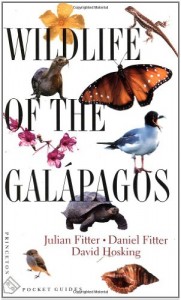 Here at WoWasis, we recommend two nature guidebooks for travelers to the Galapagos. We’ve already reviewed Pierre Constant’s Marine Life of the Galapagos: The Diver’s Guide to Fishes, Whales, Dolphins, and Marine Invertebrates, which is the essential marine life guide. For land animals, plants and flowers, you won’t find a better one than Wildlife of the Galapagos (2000, ISBN 978-0-691-10295-5), written by Julian Fitter, Daniel Fitter, and David Hosking.
Here at WoWasis, we recommend two nature guidebooks for travelers to the Galapagos. We’ve already reviewed Pierre Constant’s Marine Life of the Galapagos: The Diver’s Guide to Fishes, Whales, Dolphins, and Marine Invertebrates, which is the essential marine life guide. For land animals, plants and flowers, you won’t find a better one than Wildlife of the Galapagos (2000, ISBN 978-0-691-10295-5), written by Julian Fitter, Daniel Fitter, and David Hosking. The book is also a key to planning your trip well before you go. Our favorite part of the book is the 23 pages of island maps denoting hiking trails with keys to where you’ll encounter specific animals and plants. We’ve written a previous post on how to simplify a Galapagos visit, must reading, because at first the plethora of options seems so daunting (and expensive). We now wish that we’d read this book before our visit. If we had we would have been better aware of the spectacular geological views to be had on Isla Bartolomé, which is otherwise a bit too easy to miss. The authors are keen on photography and the book is to a very large extent geared to people desiring to come away with memorable photographs.
The book is also a key to planning your trip well before you go. Our favorite part of the book is the 23 pages of island maps denoting hiking trails with keys to where you’ll encounter specific animals and plants. We’ve written a previous post on how to simplify a Galapagos visit, must reading, because at first the plethora of options seems so daunting (and expensive). We now wish that we’d read this book before our visit. If we had we would have been better aware of the spectacular geological views to be had on Isla Bartolomé, which is otherwise a bit too easy to miss. The authors are keen on photography and the book is to a very large extent geared to people desiring to come away with memorable photographs.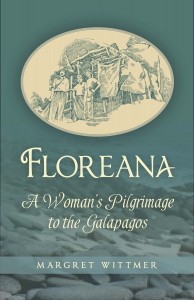
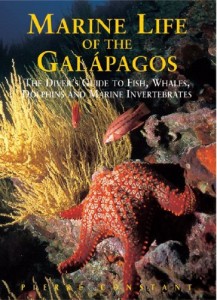
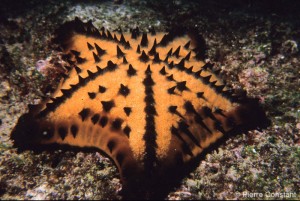

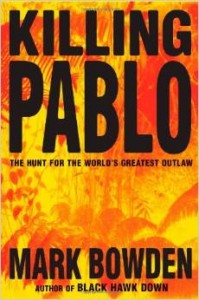
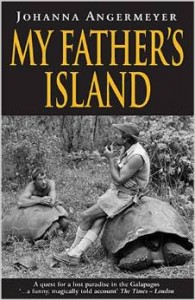 When we here at WoWasis
When we here at WoWasis 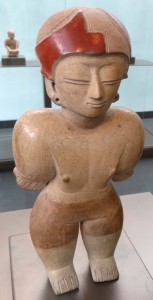
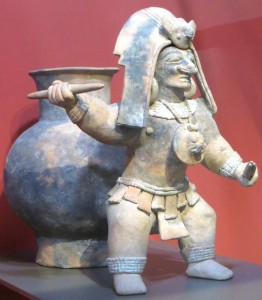
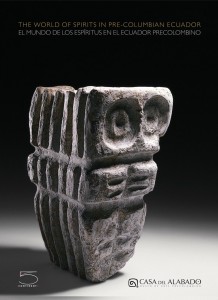
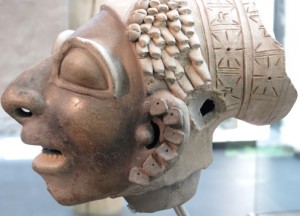
 WoWasis correspondent Khun Lee’s Top Ten Rules for keeping a Thai bargirl as your girlfriend:
WoWasis correspondent Khun Lee’s Top Ten Rules for keeping a Thai bargirl as your girlfriend: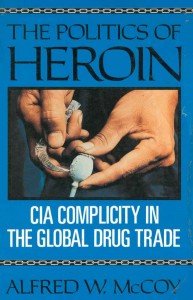

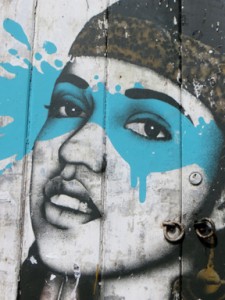 Getsemani is a picturesque neighborhood of colonial buildings and houses just across the Bahia De Los Animas from Cartagena’s old city. The
Getsemani is a picturesque neighborhood of colonial buildings and houses just across the Bahia De Los Animas from Cartagena’s old city. The 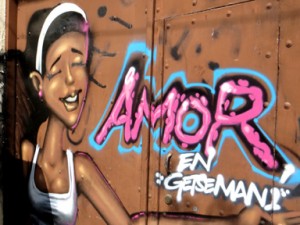 The murals run the whole gamut from primitive to outstanding. A mural of a woman’s face in Plaza de la Libertad uses metal door rings as earrings. A black Carmen Miranda lies on her side in a bed of flowers on Calle de Lomba, arms stretched over her head, disgorging an armload of fruit. ‘Amor en Getsemani’ is epitomized by a beaming young woman. Walk further and you’ll see a smiling mermaid, a woman racing on motorcycle, and all matter of abstract people and places.
The murals run the whole gamut from primitive to outstanding. A mural of a woman’s face in Plaza de la Libertad uses metal door rings as earrings. A black Carmen Miranda lies on her side in a bed of flowers on Calle de Lomba, arms stretched over her head, disgorging an armload of fruit. ‘Amor en Getsemani’ is epitomized by a beaming young woman. Walk further and you’ll see a smiling mermaid, a woman racing on motorcycle, and all matter of abstract people and places.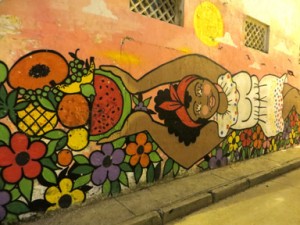 We here at
We here at 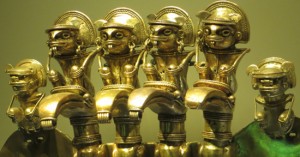 Bogota, Colombia is a city of 14 million people, and frankly, doesn’t have much going for it, in terms of the international traveler. It’s tough to get around during rush hour (try to find a taxi), so you really do need to head back to your hotel around 3 pm. Some of the downtown areas near the old city are “no-go” areas. In fact, the city it reminds us of, here at
Bogota, Colombia is a city of 14 million people, and frankly, doesn’t have much going for it, in terms of the international traveler. It’s tough to get around during rush hour (try to find a taxi), so you really do need to head back to your hotel around 3 pm. Some of the downtown areas near the old city are “no-go” areas. In fact, the city it reminds us of, here at 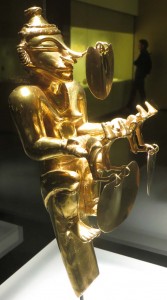 That said (we really had to get it off our chest, Bogota was low on the fun factor), one of South America’s finest and most unique museums is there, and it’s good enough to warrant a side-trip for a day to see it. It’s the remarkable Museo Del Oro, the Gold Museum, three floors containing some of the greatest Pre-Columbian gold pieces on display in South America. It’s not just the artifacts, either. The curatorial aspect of the museum is critical, and tells the story of gold in the Andes in four distinct stages: The Working of Metals, People and Gold in Pre-Historic Colombia, Cosmology and Symbolism, and The Offering. Each stage is its own display area, containing artifacts specific to the subject.
That said (we really had to get it off our chest, Bogota was low on the fun factor), one of South America’s finest and most unique museums is there, and it’s good enough to warrant a side-trip for a day to see it. It’s the remarkable Museo Del Oro, the Gold Museum, three floors containing some of the greatest Pre-Columbian gold pieces on display in South America. It’s not just the artifacts, either. The curatorial aspect of the museum is critical, and tells the story of gold in the Andes in four distinct stages: The Working of Metals, People and Gold in Pre-Historic Colombia, Cosmology and Symbolism, and The Offering. Each stage is its own display area, containing artifacts specific to the subject.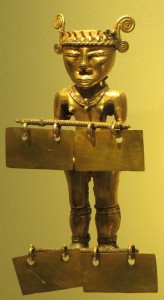 Perhaps best of all, from our perspective, is that the museum encourages the visitor to take his or her own photographs (without flash) in order to remember his or her own favorite pieces. We’ve never liked museums that ban photography as a means of securing revenue through its overpriced catalogue. Patrons have already paid for admission, and they deserve to preserve their own memories of the collection. Come here, and you can take your own photos, then buy the guidebook, go back to your hotel and read about it all, and we’re betting that eventually you’ll come back for more.
Perhaps best of all, from our perspective, is that the museum encourages the visitor to take his or her own photographs (without flash) in order to remember his or her own favorite pieces. We’ve never liked museums that ban photography as a means of securing revenue through its overpriced catalogue. Patrons have already paid for admission, and they deserve to preserve their own memories of the collection. Come here, and you can take your own photos, then buy the guidebook, go back to your hotel and read about it all, and we’re betting that eventually you’ll come back for more.